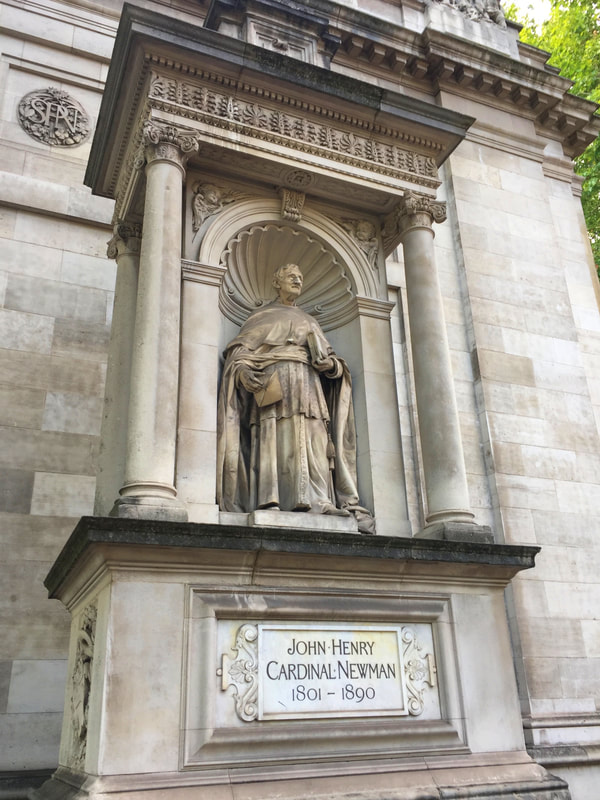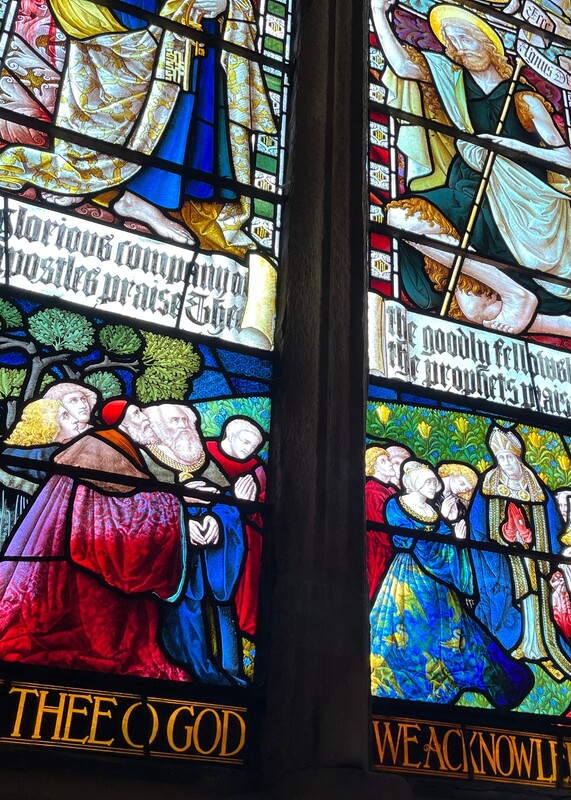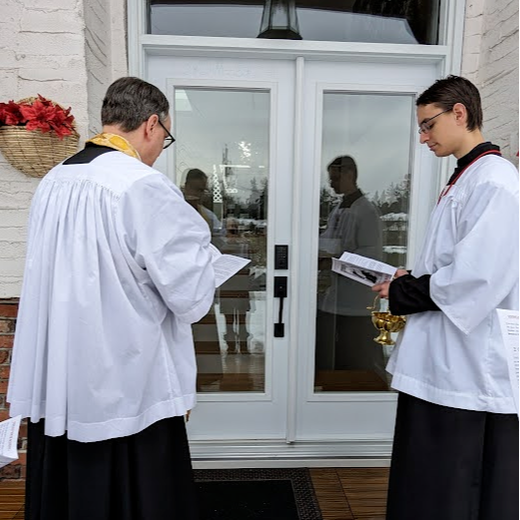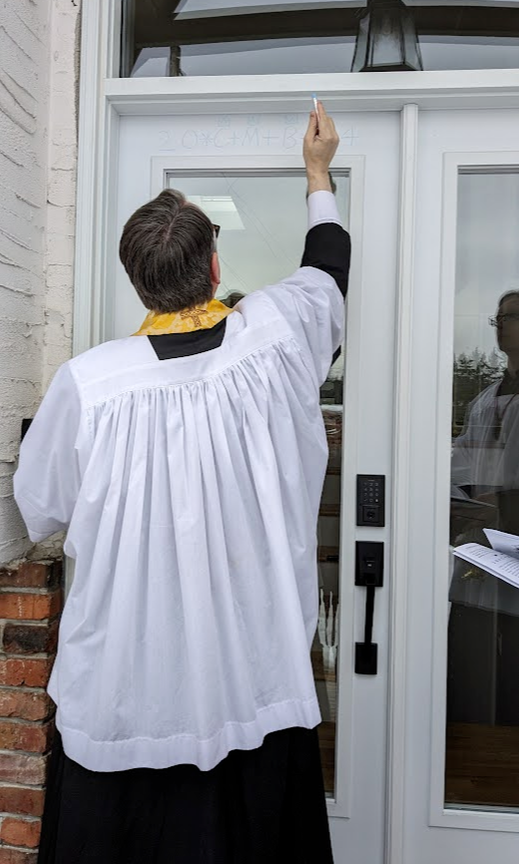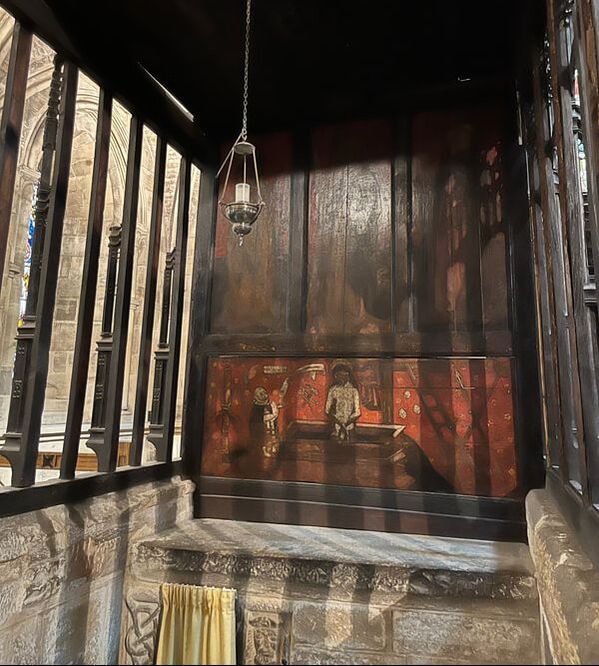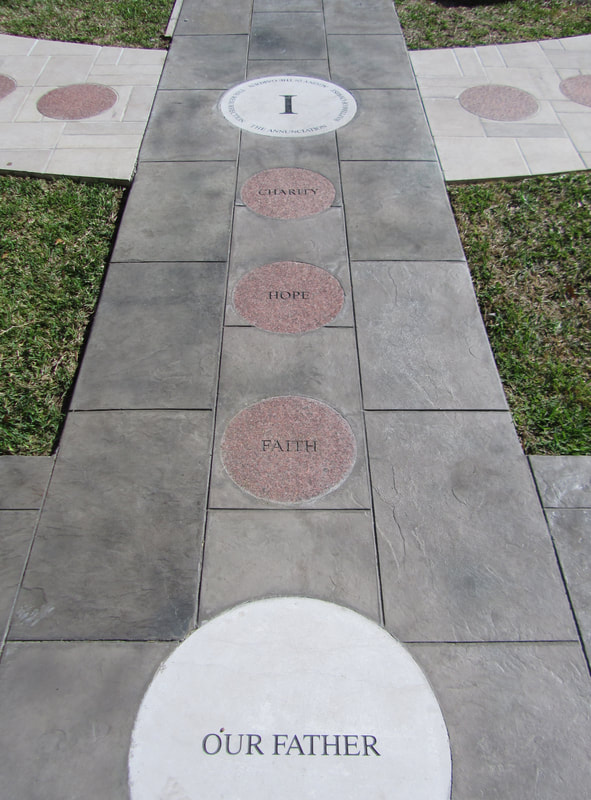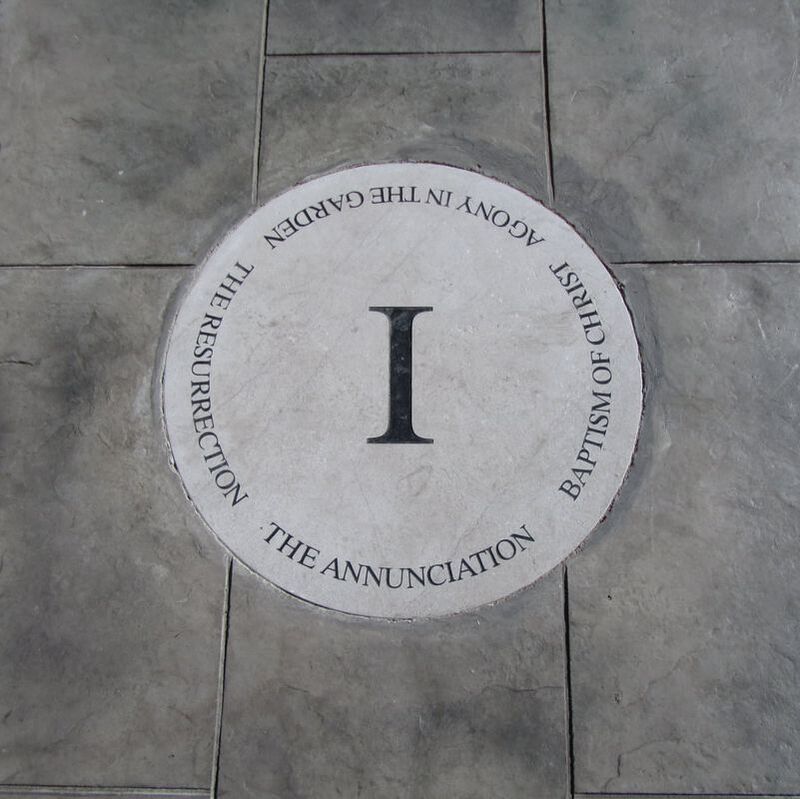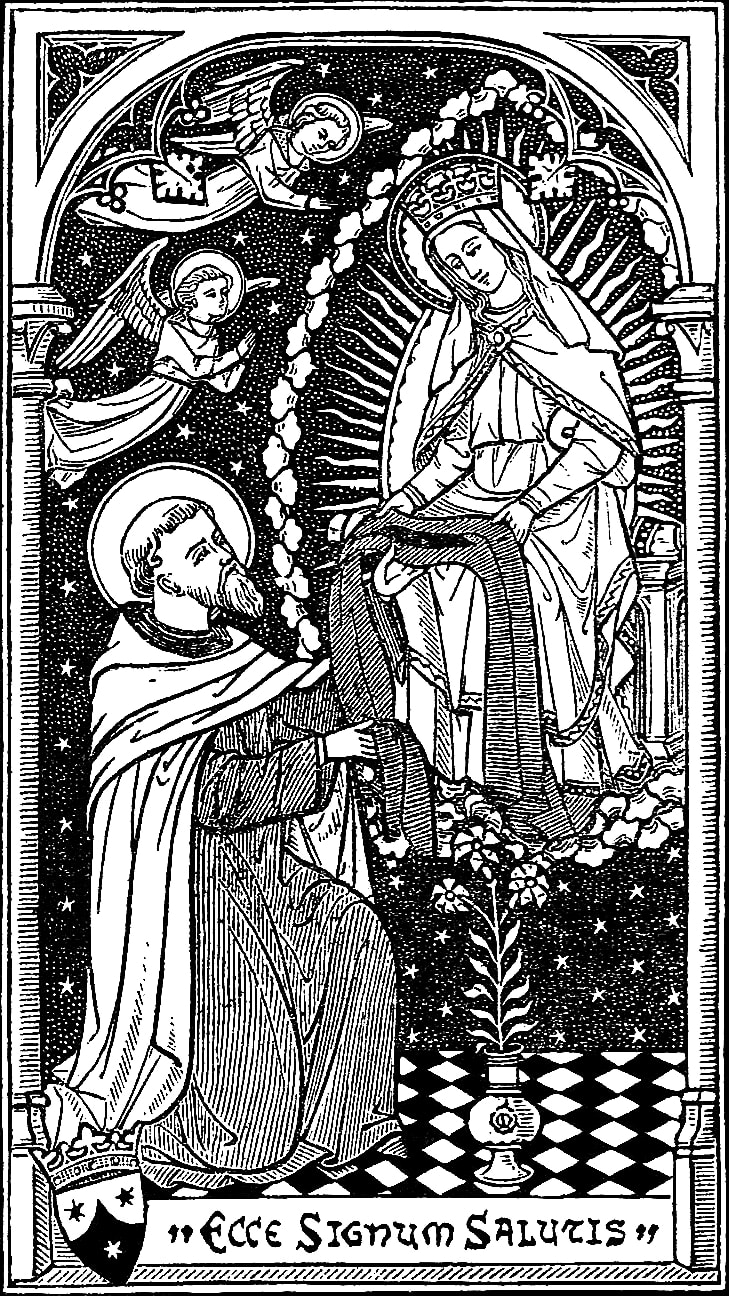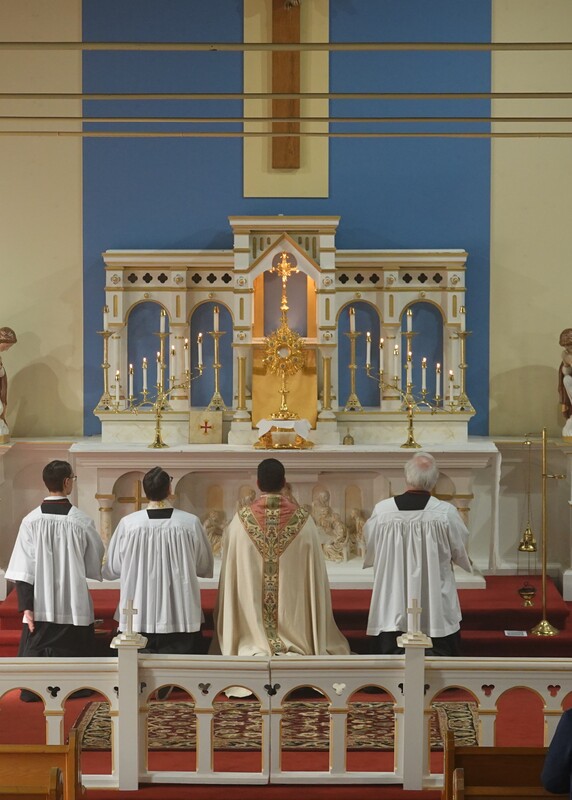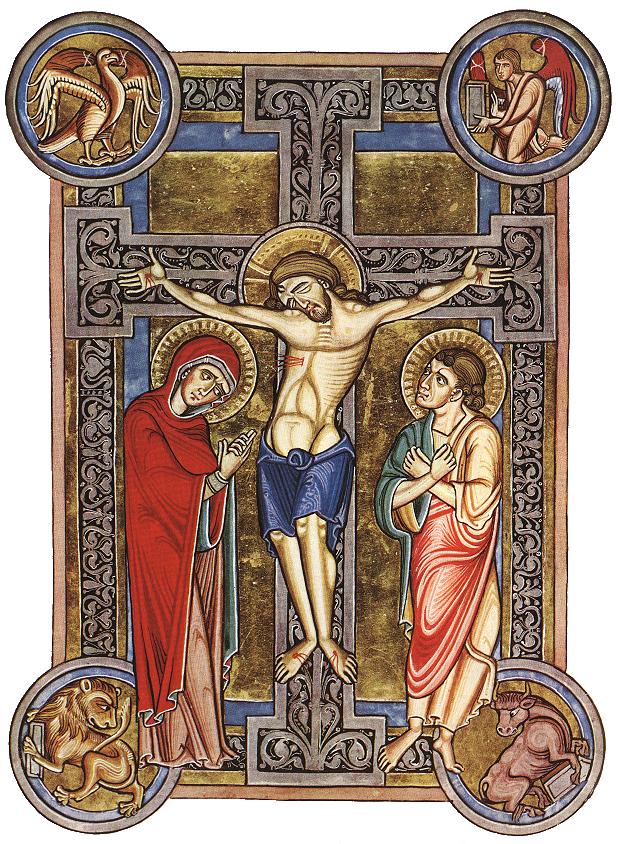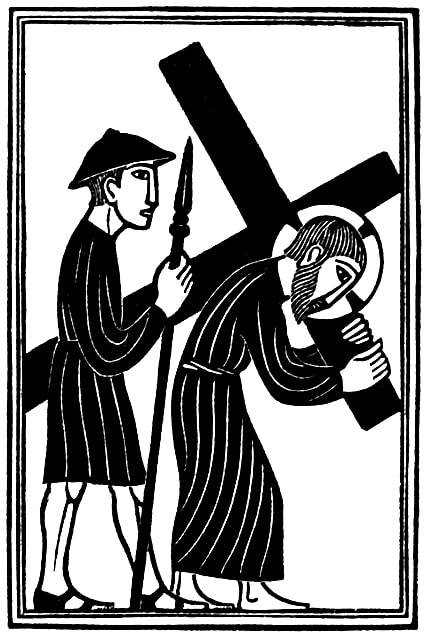Christian Living
|
TO LIVE THE CATHOLIC LIFE to the full is to strive for sainthood; that ‘crown of glory that fadeth not away’. Sanctity is, as seen in the lives of so many saints, obtained in a variety of ways. No saint, though, has been granted a place in the heavenly kingdom by just living a ‘good’ life. Far from it. We are all called, as the saints were before us, to forsake all things, to love God with all our being, to confess the true faith to the point of death; to aim for nothing short of perfection.
We have been granted the gift of life for a twofold purpose: To obtain our own sanctification, and to save as many souls as we can in the particular calling of our life. We can do neither of these if we never try. If, for example, we choose to stay home on a day off work and watch the latest thing, instead of going to Mass, or if we neglect to say our prayers because we’re ‘just too busy’, can we truly say we love God ‘more than these’? (St John 21.15). This is not to say that we should spend our lives in prayer and nothing else, though some profitably do, rather, we are called to put God first and foremost, in every moment of our life and in duties, whether that be as mundane as household chores, or as important as saving a life. |
God created us out of love, died for us out of love and, in spite of our shortcomings, continues to love us. The least we can do is to live our lives ordered to his most gracious will, striving for that perfection which will allow us, in this life, with the help of God’s infinite mercy and grace, to ready ourselves to hear, in the next life, those most gracious words of Christ, ‘Well done, thou good and faithful servant, thou hast been faithful over a few things... enter thou into the joy of thy Lord’ (St Matthew 25.21).
What follows on this page are a series of principles and pious customs to assist the Christian in living out this high calling and vocation amidst the busyness of this world, so that we might make manifest what Pope Benedict XVI once so resolutely affirmed, that ‘the Christian faith is not a idea, but a life’.
What follows on this page are a series of principles and pious customs to assist the Christian in living out this high calling and vocation amidst the busyness of this world, so that we might make manifest what Pope Benedict XVI once so resolutely affirmed, that ‘the Christian faith is not a idea, but a life’.
The Five Precepts
|
The Five Precepts of the Church outline the ‘indispensable minimum’ effort every Catholic should make in living their faith. They are:
1. To Attend Mass on Sundays and Holy Days of Obligation. This means that you are required to attend Mass every Sunday and each Holy Day of Obligation. For members of the Ordinariate in Canada, they are: Christmas (25 December)
Mary, the Holy Mother of God (1 January) Ascension Day Assumption of the Blessed Virgin Mary (15 August) All Saints’ Day (1 November) 2. To confess one’s sins at least once a year. This means that you are required to make a Sacramental Confession at least once a year, especially confessing all mortal sins.
3. To receive Holy Communion at least during the Easter season. This means that you are required to receive Holy Communion in a state of grace (not having an unconfessed mortal sin) at least once during Eastertide. |
4. To observe the days of fasting and abstinence. This means you are required to observe all days of fasting and abstinence according to the particular laws of your country. (For example, if a certain country keeps a saint’s day as a solemnity, and that day falls on a Friday, then the penitence due on this day is dispensed.) For more information on the laws of fasting and abstinence, please see Catholic Fortress’ infographics here. An explanation on fasting and abstinence on the Fridays of Lent, by Dr Brant Pitre, can be read here.
5. To provide for the needs of the Church. This means you are required to provide for the material needs of the Church ‘each according to his abilities’. Most people with a sustainable income are expected to tithe (donating 10% of your income), but there are other ways to help, such as regularly volunteering for work within your parish.
5. To provide for the needs of the Church. This means you are required to provide for the material needs of the Church ‘each according to his abilities’. Most people with a sustainable income are expected to tithe (donating 10% of your income), but there are other ways to help, such as regularly volunteering for work within your parish.
The Churching of Women
|
The Churching of Women is an ancient ceremony which stems from the Jewish custom of the ritual purification of a woman after childbirth. This rite went hand-in-hand with the presentation and dedication of a new-born child to God. Our Lady herself was purified when she brought the child Jesus to present him before the High Priest and offer him to God.
For Christians, this is an opportunity to dedicate the child to God, to render thanks for the mother’s safe delivery, and to obtain, by means of the priestly blessing, the graces necessary to bring up the child in a Christian manner. The Rite begins at the threshold of church. The mother, kneeling and holding a lighted candle, is sprinkled with holy water. After prayers have been recited, the woman is led by the priest into the church before the altar, where she receives a blessing and is sprinkled with holy water once more. O Almighty God, we give thee humble thanks for that thou hast vouchsafed to deliver this woman thy servant from the great pain and peril of child-birth: Grant, we beseech thee, most merciful Father, that she through thy help may both faithfully live and walk according to thy will, in this life present; and also may be partaker of everlasting glory in the life to come; through Jesus Christ our Lord. Amen. |
House Blessings
|
To bless a house is to ask for God’s protection on a family and home from ‘every harm and danger’, whether bodily or spiritual. The act of sprinkling holy water in every room is a sign of God’s blessing on all aspects of domestic life.
A house blessing may be requested particularly during the Easter season, when moving into a new house, for the building of a new house, or for ‘When Things go Bump in the Night’. When a house blessing is requested during the Epiphany season, it is traditional to mark the lintel of your house. This harks back to the command from God to the Jews to mark their doors as a sign of faithfulness. The letters below stand for the initials of the Magi (Caspar, Melchior, and Balthasar), and the phrase Christus Mansionem Benedicat, ‘May Christ bless the house’. The above line should be written on the lintel, or as close to it as possible, above the front door into your home. The following prayer is to accompany the action.
Lord, holy Father, Almighty, everlasting God, we beseech thee to hear us: and vouchsafe to send thy holy Angel from heaven, to guard and cherish, protect and visit, and evermore defend all that dwell in this house. I call upon thy Saints Caspar, Melchior, and Balthasar, to protect this family and this home from every harm and danger, and I place this mark over this door to remain as a constant reminder to us and all who enter here that this house is truly a house of the Lord. O God, make the door of this house the gateway to thine Eternal Kingdom. All this we ask through Jesus Christ, thy Son our Lord. Amen. Fr Kenyon is more than happy to come and do this for you, but the head of the household also has the privilege. This should be renewed each year ‘as a constant reminder to us and all who enter here that this house is truly a house of the Lord’. During Epiphanytide, a piece of chalk, blessed at Mass on the Solemnity of the Epiphany, is made available for you to take home with you for this purpose. |
Indulgences
|
An Indulgence, as defined in the Catechism of the Catholic Church is ‘a remission before God of the temporal punishment due to sins whose guilt has already been forgiven, which the faithful Christian who is duly disposed gains under certain prescribed conditions through the action of the Church which, as the minister of redemption, dispenses and applies with authority the treasury of the satisfactions of Christ and the saints’. (CCC 1471)
In addition to the specific work prescribed for a particular indulgence, the conditions for gaining any plenary indulgence are:
|
The Catechism clarifies the distinction between a partial and plenary indulgence as ‘according as it removes either part or all of the temporal punishment due to sin’. Though there are multiple opportunities throughout the year where the faithful may gain a plenary indulgence, it must be noted that while uncommon, a plenary indulgence may be gained only once per day. Some examples of days when plenary indulgences are obtainable throughout the year include:
New Year’s Eve (31 December), Mary, the Holy Mother of God (1 January), Maundy Thursday, Good Friday, Low Sunday (Divine Mercy Sunday), Whitsunday (Pentecost), the Most Sacred Heart of Jesus, Corpus Christi, Ss Peter and Paul (29 June), and Christ the King.
Whilst the Catechism states, ‘Indulgences may be applied to the living or the dead’, the following are applicable only to the souls in purgatory.
1. A plenary indulgence, applicable only to the souls in purgatory, is granted to the faithful who:
2. A partial indulgence, applicable only to the souls in purgatory, is granted to the faithful who:
For a full explanation of indulgences, please see the Enchiridion of Indulgences, for a digest of the Enchiridion please click here.
1. A plenary indulgence, applicable only to the souls in purgatory, is granted to the faithful who:
- from 1-8 November, devoutly visit a cemetery and pray, if only mentally, for the departed;
- on All Souls’ Day devoutly visit a church or an oratory and recite an Our Father and the Creed.
2. A partial indulgence, applicable only to the souls in purgatory, is granted to the faithful who:
- devoutly visit a cemetery (1-30 November) and at least mentally pray for the dead;
- devoutly recite lauds or vespers from the Office of the Dead or the prayer Requiem aeternam (‘Rest eternal, grant unto them, O Lord, and let light perpetual shine upon them’).
For a full explanation of indulgences, please see the Enchiridion of Indulgences, for a digest of the Enchiridion please click here.
Popular Devotions
The devotions mentioned below are but a small example of the wealth of Catholic prayers and practices. For a wider variety of devotions, please see the Directory on Popular Piety.
|
The Holy Rosary has been described as one of the most powerful prayers. According to tradition, it was given by Our Lady to St Dominic in an apparition in 1214, and continued to develop over time. It commonly consists of five decades, focusing on different aspects of the mysteries of the life of Christ:
The Joyful Mysteries (prayed on Mondays and Saturdays) The Annunciation of the Angel Gabriel to Our Lady The Visitation of Our Lady to her cousin Elizabeth The Birth of Our Lord Jesus Christ The Presentation of Our Lord in the Temple The Finding of Our Lord in the Temple The Luminous Mysteries (prayed on Thursdays) The Baptism of Our Lord in the River Jordan The Wedding Feast at Cana The Proclamation of the Kingdom The Transfiguration The Institution of the Holy Eucharist |
|
The Sorrowful Mysteries (prayed on Tuesdays and Fridays)
The Agony of Our Lord in the Garden of Gethsemane The Scourging of Our Lord at the Pillar The Crowning of Our Lord with Thorns The Carrying of the Cross The Crucifixion and Death of Our Lord The Glorious Mysteries (prayed on Sundays and Wednesdays) The Resurrection of Our Lord The Ascension of Our Lord into Heaven The Descent of the Holy Ghost upon the Apostles The Assumption of Our Lady into Heaven The Coronation of Our Lady and the Glory of all the Saints |
For a guide on how to pray the Rosary, please click here.
A plenary indulgence is granted under the usual conditions to those who say the Rosary in a church, with the following additional conditions:
At St John Henry’s, the Rosary is prayed for pro-life intentions on Mondays, and for family intentions on Wednesdays at 10.25 am, and for general intentions on Saturdays at 9 am.
A plenary indulgence is granted under the usual conditions to those who say the Rosary in a church, with the following additional conditions:
- The five decades must be recited continuously.
- The vocal recitation must be accompanied by pious meditation on the mysteries.
- The mysteries must be announced.
At St John Henry’s, the Rosary is prayed for pro-life intentions on Mondays, and for family intentions on Wednesdays at 10.25 am, and for general intentions on Saturdays at 9 am.
|
The Brown Scapular is a woolen cloth worn as a ‘silent prayer’ and constant devotion to Our Lady. The extraordinary promise given with the scapular in 1251 by Our Lady to St Simon Stock is that, ‘anyone dying in this habit shall not suffer eternal fire’. In addition to this, Mary also promised that she ‘shall descend on the Saturday after [the death of one wearing the Brown Scapular] and whomsoever I shall find in purgatory I shall free so that I may lead them to the holy mountain of life everlasting.’
After being enrolled by any Catholic priest, there are three conditions one must fulfil to obtain the promises mentioned above:
For more information on the Brown Scapular, please click here. |
|
Exposition is the solemn act of ‘exposing’ or showing the Blessed Sacrament. This is done at every Mass at the Ecce, Agnus Dei (‘Behold, the Lamb of God’), when the priest turns to face the people and echoes the words of St John the Baptist (cf. St John 1.29).
Adoration is prayer before the Blessed Sacrament exposed on the Altar in a monstrance. The reality of God’s presence allows us to connect directly with Our Lord in ways beyond our understanding. A plenary indulgence is granted under the usual conditions to those who visit the Blessed Sacrament exposed on the Altar for at least half an hour, and a partial indulgence is granted for those who visit the Blessed Sacrament in Adoration for any less time. Benediction is when the faithful are blessed with the Blessed Sacrament. This is the most powerful blessing a priest can give. At St John Henry’s there is Exposition and Benediction every Saturday from 10.30-11.30 am, and on other special occasions, such as the Solemnity of Christ the King. |
The Stations of the Cross follow the significant moments of Our Lord’s Passion and Death. They can be meditated on throughout the year, but are most fitting during the season of Lent. Many Saints have written reflections on the Stations, including our own St John Henry Newman, which can be found in full here.
|
The First Station: Jesus Is Condemned to Death
Leaving the House of Caiphas, and dragged before Pilate and Herod, mocked, beaten, and spit upon, His back torn with scourges, His head crowned with thorns, Jesus, who on the last day will judge the world, is Himself condemned by unjust judges to a death of ignominy and torture. The Second Station: Jesus receives His Cross A strong, and therefore heavy Cross, for it is strong enough to bear Him on it when He arrives at Calvary, is placed upon His torn shoulders. He receives it gently and meekly, nay, with gladness of heart, for it is to be the salvation of mankind. The Third Station: Jesus falls the first time beneath the Cross Jesus, bowed down under the weight and the length of the unwieldy Cross, which trailed after Him, slowly sets forth on His way, amid the mockeries and insults of the crowd. His agony in the Garden itself was sufficient to exhaust Him; but it was only the first of a multitude of sufferings. He sets off with His whole heart, but His limbs fail Him, and He falls. |
The Fourth Station: Jesus meets His Mother
Jesus rises, though wounded by His fall, journeys on, with His Cross still on His shoulders. He is bent down; but at one place, looking up, He sees His Mother. For an instant they just see each other, and He goes forward.
The Fifth Station: Simon of Cyrene helps Jesus to carry the Cross
At length His strength fails utterly, and He is unable to proceed. The executioners stand perplexed. What are they to do? How is He to get to Calvary? Soon they see a stranger who seems strong and active — Simon of Cyrene. They seize on him, and compel him to carry the Cross with Jesus. The sight of the Sufferer pierces the man’s heart. Oh, what a privilege! O happy soul, elect of God! He takes the part assigned to him with joy.
The Sixth Station: Jesus and Veronica
As Jesus toils along up the hill, covered with the sweat of death, a woman makes her way through the crowd, and wipes His face with a napkin. In reward of her piety the cloth retains the impression of the Sacred Countenance upon it.
The Seventh Station: Jesus falls a second time
The pain of His wounds and the loss of blood increasing at every step of His way, again His limbs fail Him, and He falls on the ground.
The Eighth Station: Jesus comforts the Women of Jerusalem
At the sight of the sufferings of Jesus the Holy Women are so pierced with grief that they cry out and bewail Him, careless what happens to them by so doing. Jesus, turning to them, said, ‘Daughters of Jerusalem, weep not over Me, but weep for yourselves and for your children.’
The Ninth Station: Again, a third time, Jesus falls
Jesus had now reached almost to the top of Calvary; but, before He had gained the very spot where He was to be crucified, again He fell, and is again dragged up and goaded onwards by the brutal soldiery.
The Tenth Station: Jesus is stripped, and drenched with gall
At length He has arrived at the place of sacrifice, and they begin to prepare Him for the Cross. His garments are torn from His bleeding body, and He, the Holy of Holiest, stands exposed to the gaze of the coarse and scoffing multitude.
The Eleventh Station: Jesus is nailed to the Cross
The Cross is laid on the ground, and Jesus stretched upon it, and then, swaying heavily to and fro, it is, after much exertion, jerked into the hole ready to receive it. Or, as others think, it is set upright, and Jesus is raised up and fastened to it. As the savage executioners drive in the huge nails, He offers Himself to the Eternal Father, as a ransom for the world. The blows are struck—the blood gushes forth.
The Twelfth Station: Jesus dies upon the Cross
Jesus hung for three hours. During this time He prayed for His murderers, promised Paradise to the penitent robber, and committed His Blessed Mother to the guardianship of St John. Then all was finished, and He bowed His head and gave up His Spirit.
The Thirteenth Station: Jesus is taken from the Cross, and laid in Mary’s Bosom
The multitude have gone home. Calvary is left solitary and still, except that St John and the holy women are there. Then come Joseph of Arimathea and Nicodemus, and take down from the Cross the body of Jesus, and place it in the arms of Mary.
The Fourteenth Station: Jesus is laid in the Tomb
But for a short three days, for a day and a half — Mary then must give Him up. He is not yet risen. His friends and servants take Him from thee, and place Him in an honourable tomb. They close it safely, till the hour comes for His resurrection.
Jesus rises, though wounded by His fall, journeys on, with His Cross still on His shoulders. He is bent down; but at one place, looking up, He sees His Mother. For an instant they just see each other, and He goes forward.
The Fifth Station: Simon of Cyrene helps Jesus to carry the Cross
At length His strength fails utterly, and He is unable to proceed. The executioners stand perplexed. What are they to do? How is He to get to Calvary? Soon they see a stranger who seems strong and active — Simon of Cyrene. They seize on him, and compel him to carry the Cross with Jesus. The sight of the Sufferer pierces the man’s heart. Oh, what a privilege! O happy soul, elect of God! He takes the part assigned to him with joy.
The Sixth Station: Jesus and Veronica
As Jesus toils along up the hill, covered with the sweat of death, a woman makes her way through the crowd, and wipes His face with a napkin. In reward of her piety the cloth retains the impression of the Sacred Countenance upon it.
The Seventh Station: Jesus falls a second time
The pain of His wounds and the loss of blood increasing at every step of His way, again His limbs fail Him, and He falls on the ground.
The Eighth Station: Jesus comforts the Women of Jerusalem
At the sight of the sufferings of Jesus the Holy Women are so pierced with grief that they cry out and bewail Him, careless what happens to them by so doing. Jesus, turning to them, said, ‘Daughters of Jerusalem, weep not over Me, but weep for yourselves and for your children.’
The Ninth Station: Again, a third time, Jesus falls
Jesus had now reached almost to the top of Calvary; but, before He had gained the very spot where He was to be crucified, again He fell, and is again dragged up and goaded onwards by the brutal soldiery.
The Tenth Station: Jesus is stripped, and drenched with gall
At length He has arrived at the place of sacrifice, and they begin to prepare Him for the Cross. His garments are torn from His bleeding body, and He, the Holy of Holiest, stands exposed to the gaze of the coarse and scoffing multitude.
The Eleventh Station: Jesus is nailed to the Cross
The Cross is laid on the ground, and Jesus stretched upon it, and then, swaying heavily to and fro, it is, after much exertion, jerked into the hole ready to receive it. Or, as others think, it is set upright, and Jesus is raised up and fastened to it. As the savage executioners drive in the huge nails, He offers Himself to the Eternal Father, as a ransom for the world. The blows are struck—the blood gushes forth.
The Twelfth Station: Jesus dies upon the Cross
Jesus hung for three hours. During this time He prayed for His murderers, promised Paradise to the penitent robber, and committed His Blessed Mother to the guardianship of St John. Then all was finished, and He bowed His head and gave up His Spirit.
The Thirteenth Station: Jesus is taken from the Cross, and laid in Mary’s Bosom
The multitude have gone home. Calvary is left solitary and still, except that St John and the holy women are there. Then come Joseph of Arimathea and Nicodemus, and take down from the Cross the body of Jesus, and place it in the arms of Mary.
The Fourteenth Station: Jesus is laid in the Tomb
But for a short three days, for a day and a half — Mary then must give Him up. He is not yet risen. His friends and servants take Him from thee, and place Him in an honourable tomb. They close it safely, till the hour comes for His resurrection.
|
A plenary indulgence is granted under the usual conditions to those who piously make the Way of the Cross, with the following additional conditions:
At St John Henry’s, the Stations of the Cross are prayed publicly every Friday in Lent. |

